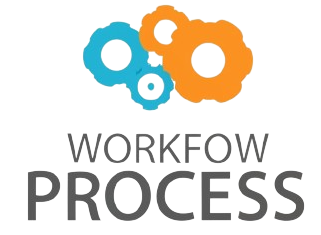Driving growth with autonomous AI under effective governance is transforming the way businesses operate, innovate, and compete in today’s fast-paced market. Autonomous AI, which refers to systems capable of independent learning, decision-making, and action, offers unparalleled potential for operational efficiency, customer personalization, and strategic agility. However, harnessing this power requires robust governance frameworks to mitigate risks such as bias, security threats, and regulatory non-compliance. This article explores how organizations can maximize growth by integrating autonomous AI technologies within a clear governance structure, ensuring ethical use, transparency, and accountability. From addressing strategic planning to risk management, we uncover the critical components necessary to leverage AI innovation safely and sustainably for long-term business success.
Understanding autonomous AI and its growth potential
Autonomous AI encompasses systems that perform complex tasks with minimal human intervention. These technologies include self-driving vehicles, AI-powered analytics platforms, chatbots, and dynamic supply chain optimizers. The value lies in their ability to continuously learn and adapt, driving faster decision-making while reducing operational costs. According to recent research by McKinsey, companies that invest in AI-driven automation can improve productivity by up to 40% and generate 30% higher profit margins compared to less digital-savvy peers.
Businesses leveraging autonomous AI can unlock new revenue streams and enhance customer experiences through real-time insights and personalization. However, these benefits do not come without challenges, demanding a well-defined framework to govern AI deployment effectively.
The role of governance in managing risks and ethical concerns
Effective governance acts as the backbone of responsible AI adoption. It encompasses policies, procedures, and tools designed to ensure AI systems operate within ethical and legal boundaries. Without governance, autonomous AI risks amplifying biases present in training data, making erroneous decisions, or exposing sensitive data to breaches. Key components of governance include:
- Transparency in AI algorithms and decision-making processes
- Accountability frameworks to assign responsibility for AI outcomes
- Regular audits to detect and mitigate risks early
- Compliance with local and international regulations
For example, the European Union’s AI Act proposes strict guidelines that emphasize human oversight and risk-based classification, reflecting growing regulatory scrutiny worldwide.
Integrating AI governance into business strategy
To drive growth, governance cannot function as a standalone activity but must be integrated seamlessly with business strategy. This means involving cross-functional teams including IT, legal, compliance, and business units from the outset. Strategic integration enables:
- Aligning AI projects with organizational objectives and ethical standards
- Embedding governance checkpoints throughout the AI lifecycle—from design and deployment to monitoring
- Facilitating adaptive governance models that evolve with the pace of AI advancements
Organizations with mature AI governance models outperform competitors because they can innovate rapidly without exposing themselves to unintended risks. This alignment also strengthens stakeholder trust, which is critical when AI decisions impact customers directly.
Measuring performance and continuously improving
Growth driven by autonomous AI under governance depends heavily on ongoing performance measurement and iterative improvement. Key performance indicators (KPIs) help track both AI effectiveness and compliance adherence. Table 1 below outlines important metrics for balanced growth management:
| Category | KPI | Description |
|---|---|---|
| AI performance | Accuracy and efficiency | Measures how well AI systems achieve desired outcomes and operational speed |
| Risk management | Incident rate | Monitors frequency of errors, biases, or security breaches |
| Governance | Audit compliance | Tracks adherence to governance policies and regulatory requirements |
| Growth impact | Revenue uplift and cost savings | Measures financial benefits attributable to autonomous AI initiatives |
By combining quantitative data with qualitative insights, organizations can refine governance frameworks and AI systems to ensure responsible innovation and sustained performance improvement.
Conclusion
Driving growth with autonomous AI requires a careful balance between embracing innovation and enforcing effective governance. Autonomous AI offers remarkable opportunities—from boosting efficiency to unlocking new revenue streams—but these gains depend on an organization’s ability to manage associated risks and ethical issues responsibly. Implementing a governance framework that emphasizes transparency, accountability, and regulatory compliance creates a stable foundation for AI initiatives. Moreover, integrating governance into the overall business strategy ensures alignment with corporate goals and stakeholder expectations. Finally, continuous measurement and refinement of AI performance and governance practices enable sustainable growth and trust in AI deployment. Companies that master this balance are well-positioned to thrive in the evolving digital landscape.
